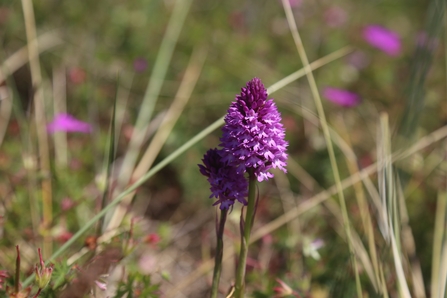Recently the Trust was contacted by Don, a Durham Wildlife Trust member and regular visitor to the Trust’s Hawthorn Dene Nature Reserve. Every visit to Hawthorn Dene brings a new discovery and this spring has been no exception. During my early May visit I was met with an amazing display of Early Purple orchid (Orchis mascula) along the woodland nature trail. It struck me that I had never seen quite so many. Nature rewarding me, perhaps, on my first outing since lockdown restrictions eased.
Coincidentally it was the next day that Don called the Trust with a query regarding Hawthorn Dene’s amazing meadow. A fellow devotee of Hawthorn Dene, Don has spent years visiting the woodland and the meadow. In particular he has taken a great deal of enjoyment from the displays of orchids in the meadow. He wondered though, why from year-to-year the numbers of a particular orchid species could be so variable?
I would have liked to have said to Don that this is a straightforward answer, but for reasons you are going to read in the following paragraphs, there can be a lot of factors at play. Thank you to Don for your query, I hope you find the following article helpful.


